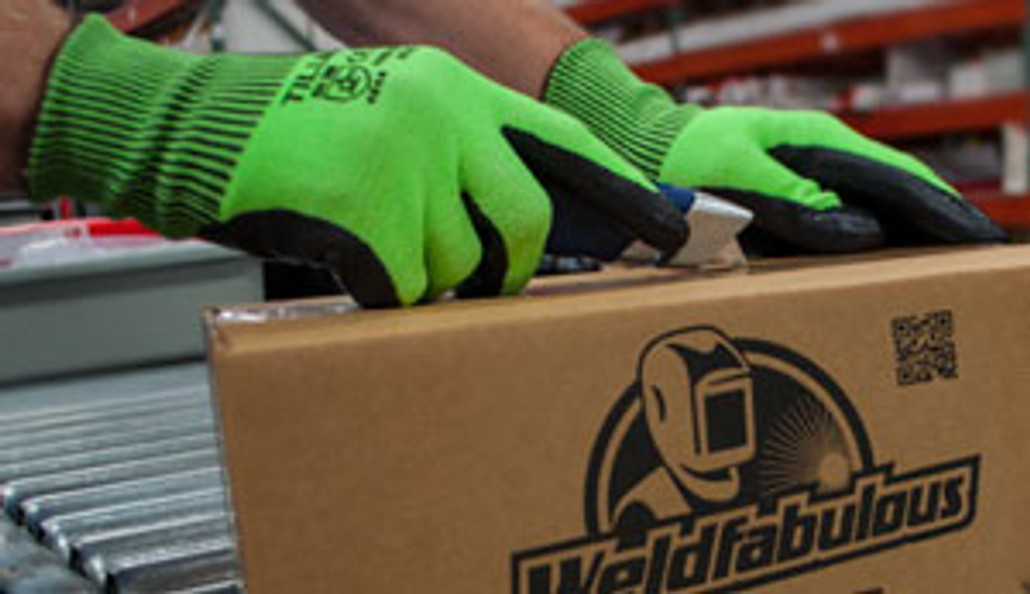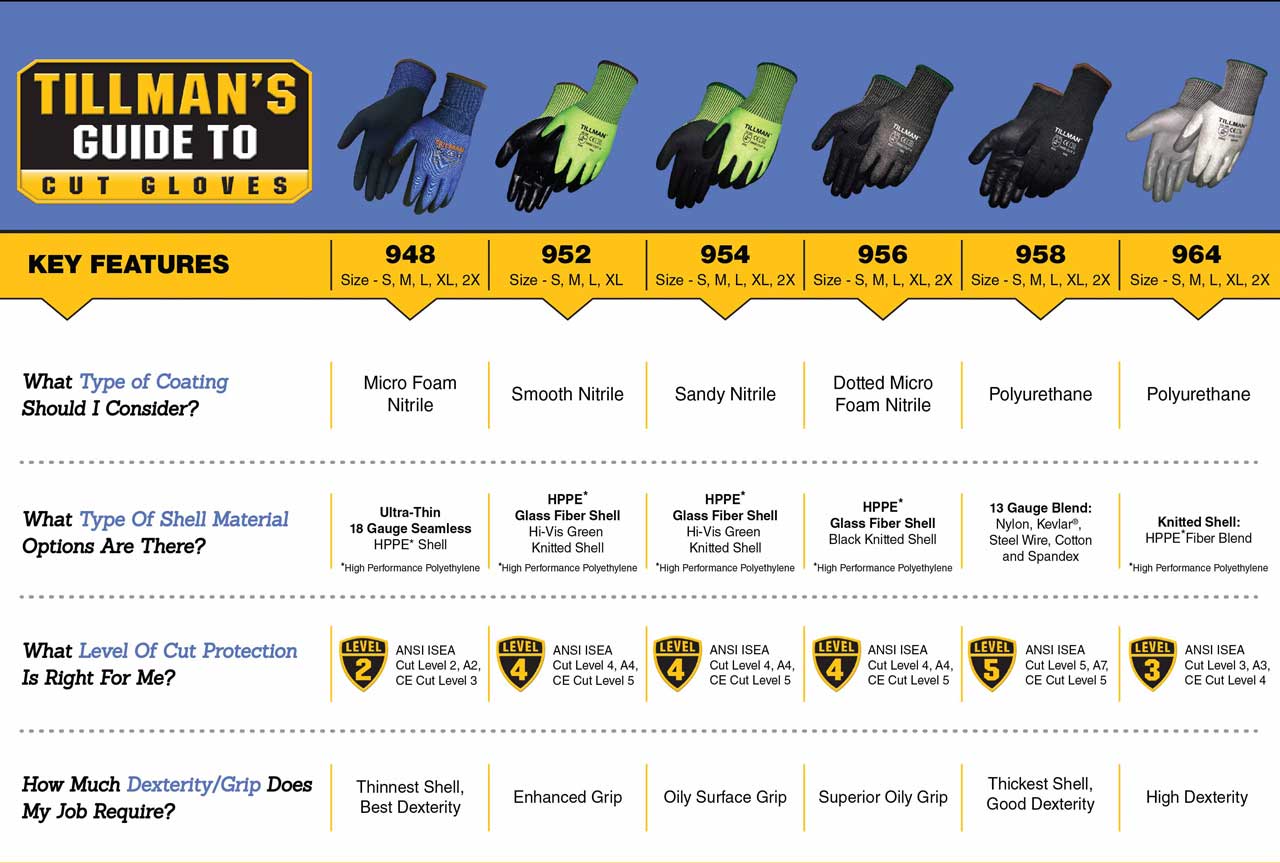
How to Choose the Right Cut Gloves for the Job
Nov 8th 2016

Hand injuries represent the highest percentage of total work related injuries. Protect yourself with the appropriate pair of gloves for your job or project, and application.
With so many cut gloves available, Tillman has developed a guide that helps you determine the right selection. So, let’s dive right into it!
1) What Type of Coating Should You Consider?
There are basically four types:
Smooth Nitrile –provides the wearer an excellent dry grip. Liquids will not absorb into the coating.
Sandy Nitrile –enhances grip and reduces slippage in wet and rugged applications.
Dotted Micro Foam –provides enhanced grip and durability. Designed to channel away liquids to allow better handling in wet and dirty conditions.
Polyurethane –offers good abrasion resistance and dry grip. Coating is generally thinner, resulting in improved flexibility and dexterity.
2) What Type of Shell Material to Consider?
Materials available fall under these categories:
Latex –natural rubber with poor cut resistance.
Leather –a material made from the skin of an animal by tanning or a similar process.
Cotton –fibrous plant material made into textile.
Synthetics –made-made materials like polyester, acrylic, nylon, rayon, acetate, spandex
Steel Wire/Kevlar – woven wire mesh material with the highest cut resistance rating.
3) What Level of Cut Protection is Right for You?
Always ensure your selected glove complies with the mandated safety standard required.
Nuisance Cuts, LEVEL 2 –light material handling, small parts assembly without sharp edges, and automotive maintenance.
Light Cut Hazards, LEVEL 3 –packaging, warehouse, light duty general purpose, and some masonry applications.
Medium Cut Hazards, LEVEL 4 –light duty metal handling, metal stamping, light duty glass, plastics, and material handling.
High Cut Hazards, LEVEL 5 –light duty metal handing, appliance manufacturing, bottle & light glass handling.
Higher Cut Hazards, LEVEL 6 –metal stamping, sheet metal handling, glass handling, automotive assembly.
Extreme Cut Hazards, LEVEL 7 –heavy duty metal stamping, metal recycling, food processing, pulp and paper.
4) How Much Dexterity/Grip Does my Job Require?
Grip plays into the type of coating explained earlier.The level of dexterity depends on two factors: The gauge of the material, and the stiffness. The thicker the gauge puts more material between your hands and the object you are holding. The type of material can affect the thickness and stiffness.
Now you are ready to make some cut glove choices! Below is Tillman’s Guide to Cut Gloves and recommended cut gloves based on your preferences.

Don’t forget to inspect your gloves before each use. Age, cracks, cuts, brittleness, and wear are all indicators that you need a new pair! Don’t risk the possibility of seriously injuring yourself.
